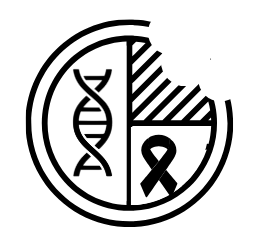Reading time: 4 minutes
Kedar Puvar
Designing new anticancer compounds is often a deliberate process, where the mechanism of action involves the blocking of a certain target, like a receptor or other cellular protein. Researchers would then optimize potential leads until a potent and effective drug is ready for clinical trials. This pipeline is considered to be the standard by which new medicines are brought to the market. However, a collaborative effort led by a team from Cold Spring Harbor Lab has raised some important questions as to these drug compounds’ true targets.
Previously, this group had studied maternal embryonic leucine zipper kinase (MELK), a protein that had been understood to be critical for the progression of multiple cancers. Strikingly, after deleting MELK from cancer cells via CRISPR-Cas9 mediated gene editing, they found that cancer cells still grew, going against the understanding that MELK was a cancer target – if inhibiting MELK is thought to kill cancer cells, then how does deleting MELK altogether have no effect? At the time, companies had been trying to pursue inhibitors of this protein as possible cancer therapeutics. Even more puzzling was that a drug compound that was believed to work by inhibiting MELK continued to kill cancer cells that had MELK knocked out. Thus, the anticancer activity was found not to be a result of its inhibitory properties against MELK, but an entirely different effect which no one had yet figured out. This drug, named OTS167, was undergoing phase 2 clinical trials at that point. Accurately knowing the mechanism of action of a potential therapeutic is important for many reasons: first, drug candidates with clear biomarkers are up to three times more likely to make it through clinical trials than those without due to researchers having a better idea of which patients the drug would work best on. And second, once a therapeutic target has been identified, tremendous amounts of resources are spent by companies and academic labs alike to search for new drugs for that target, so there is little room for being misled.
Earlier this September, this research team led by Jason Scheltzer from Cold Spring Harbor Laboratory published a paper in the journal Science Translational Medicine that extended their work to ten different preclinical or clinical cancer drugs targeting six different protein targets. They looked specifically for examples where a single protein was thought to be critical for cancer progression, and where no resistance mutation had been identified (often times during therapy, cancer cells will develop mutations in the target protein that cause them to resist drugs. Therefore, the formation of a resistance mutation is often good evidence that the suspected target is the correct one).
The experiment they performed was simple but effective: By using CRISPR-Cas9 guide RNAs to knock out these drug targets in question, they examined how well the knockout cells grew in comparison to normal cancer cells. In theory, if the target is deleted from the genome, it should mean that the cells would grow measurably slower or not at all. However, contrary to that hypothesis, the knockouts grew just as well as the normal cancer cells. And just like with OTS167, the ten new compounds were all found to still be effective, indicating that all of these therapies work via off-target effects. In other words, they are hitting a different bullseye than originally thought.
How has everyone gotten these targets wrong? It may have to do with the way that those mirage targets were validated. The commonly used technique to silence proteins in the past has been the use of RNA interference, or RNAi. Scheltzer and colleagues found a flaw in this technique, finding that it can lead to cell death in and of itself in some cases. Thanks to direct gene knockout, we are now able to better validate our cancer targets.
It’s not completely clear how many compounds either in trials or even ones on the market may be working via off-target effects, but this recent study highlights the tools that we now have in the toolbox to catch those that are. Knowing the correct target of a therapeutic is a big deal; one of the biggest benefits is preventing researchers’ work from getting stalled by chasing red herrings. In light of this work, there is a need for updated validation techniques to be introduced in our cancer research laboratories.
Edited by Morgan McSweeney
Works Discussed:
Ganguly, R., Hong, C. S., Smith, L. G. F., Kornblum, H. I., & Nakano, I. (2014). Maternal Embryonic Leucine Zipper Kinase: Key Kinase for Stem Cell Phenotype in Glioma and Other Cancers. Molecular Cancer Therapeutics, 13(6), 1393–1398. https://doi.org/10.1158/1535-7163.MCT-13-0764
Gray, D., Jubb, A. M., Hogue, D., Dowd, P., Kljavin, N., Yi, S., … Davis, D. P. (2005). Maternal Embryonic Leucine Zipper Kinase/Murine Protein Serine-Threonine Kinase 38 Is a Promising Therapeutic Target for Multiple Cancers. Cancer Research, 65(21), 9751–9761. https://doi.org/10.1158/0008-5472.CAN-04-4531
Lin, A., Giuliano, C. J., Sayles, N. M., & Sheltzer, J. M. (2017). CRISPR/Cas9 mutagenesis invalidates a putative cancer dependency targeted in on-going clinical trials. eLife, 6. https://doi.org/10.7554/eLife.24179
Huang, H.-T., Seo, H.-S., Zhang, T., Wang, Y., Jiang, B., Li, Q., … Gray, N. S. (2017). MELK is not necessary for the proliferation of basal-like breast cancer cells. eLife, 6, e26693. https://doi.org/10.7554/eLife.26693
Lin, A., Giuliano, C. J., Palladino, A., John, K. M., Abramowicz, C., Yuan, M. L., … Sheltzer, J. M. (2019). Off-target toxicity is a common mechanism of action of cancer drugs undergoing clinical trials. Science Translational Medicine, 11(509), eaaw8412. https://doi.org/10.1126/scitranslmed.aaw8412
Image Credits
Think you’ve struck gold? Guess again. It’s a crystal of iron pyrite, or fool’s gold. Source: Flickr user James Van Gundy, Creative Commons license.

